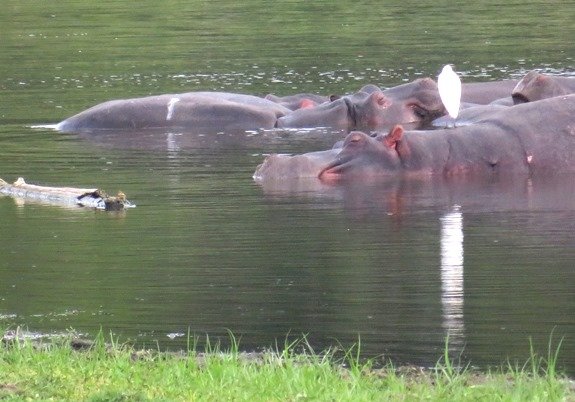Close and comfortable

Author: Ivan Lätti
Photographer: Ivan Lätti
If the water and grass remain sufficient, these guys won’t mind global warming. Their happy hours are plentiful in the Crocodile River. The obvious comfort of this habitual huddle brings thoughts of communal baths of the Orient and Roman times, possibly the modern jacuzzi. Swimming pools? No! Too much activity and too sanitised.
In animal world the closest relatives of the hippo (apart from the pygmy hippopotamus weighing 200 kg) are porpoises, dolphins and whales. They all belong in the Whippomorpha order, the more general or broader zoological category of taxonomy above family. All members of this order live orderly in the wet, the hippo having at least progressed to a fresh water adaptation and amphibian habits of eating on land or at least above water.
Hippos are happy in 1,5 m of river or dam water where the bottom is sandy, surrounded by grazing land up to 5 k from home base. Hippos stand and walk in the water, rarely swim and avoid fast current rivers. A hippo can stay submerged for five minutes, usually emerges in only half that.
The large, up-curved, canine teeth are solely for fighting. The razor-sharp incisors cut grass efficiently, even in the darkness of their normal grazing time. A big animal ingests up to 45 kg of vegetation during a five-hour dinner session. Hippos don’t eat fish but fish eat their dung.
Where else in the world can one peacefully defecate on a buddy's back? The cattle egret in picture is quite safe, sharing confidences with its big mates of long standing (Riëtte, 2016).

